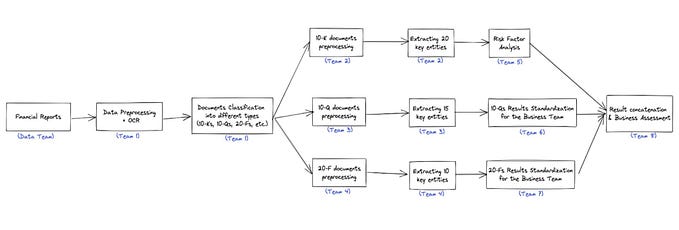How to Understand Consumer Preference?
Conjoint Series 1 — Scene 1
Conjoint Series — Scene 2 — Which Product are Most Important?
Conjoint Series — Scene 3 — Designing Orthogonal Survey?
Conjoint Series — Scene 4 — Regression Analysis for All Respondent
Conjoint Series — Scene 5 — Market Segmentation using Conjoint Analysis
Dess, the newly appointed Director of Data Science of a boutique analytics company scratching his head. Stream of project coming. This is a good sign that his company did the right thing. However, with a small team, he feels like his team needs to work more than 24 hours.
Ran, the Data Analytics Translator runs his room. She paused and took a deep breath, “Dess, I met with the Account Director in the lift. She said that our client is looking for a way to understand what their customer wants. They want to develop new product, but not sure what feature of product that most appealing to their customer. Is it the taste? smell? flavor? price?”
“Interesting. Do you have any idea about the approach or timeline?”
“Not yet about the approach. It is a preliminary discussion, so the timeline is still unclear. Any idea how we should proceed?”
“There are few solutions to approach the problem. Have you ever heard anything about conjoint analysis?” Dess asked
“I am not sure I understand that. Seems that our team haven’t had the experience on that matter”
“Ok. Then, the gather our team”
Dess manages three people. Ran, the Data Analytics Translator, Ray, very smart Analyst and Abe, the efficient coder.
“Hello….good morning everyone.”
“Morning, Dess.” Ran, Abe, and Ray enthusiastically answer the greeting
“So, today, I would like to explain to you a method that has been very common in market research,” Dess opening the speech, “Let’s call this training as “WHAT DOES OUR BELOVED CUSTOMER REALLY WANT”. Are you ready for it?”
“Let’s start”
The lights dim, the projector turn on. And in front of the room, Dess start his preach….
When a soda drinker chooses between Coke and Pepsi, what is the relevant importance of the following:
- Price
- Brand (Coke or Pepsi)
- Type of soda (diet or regular)
This is the tasked of marketing analyst, to determine the attributes of a product that most or least important. This task is crucial, because when designing a product, R&D department wanted to know what drive the consumer product choice.
But how the marketing analyst could come up with the list of features? Is there any methodology usable for the marketing analyst at his disposal?
One such method is conjoint analysis. We will follow a discussion on how to leverage the conjoint analysis from designing a survey questions, collecting data and getting the insight from this project. Conjoint analysis enables the marketing analyst to determine the product features that drive a consumer’s preference for product. For example, buying coffee maker, what matter most: brand, price, someone recommend the product?
In conjoint analysis, there are several crucial definition: product set, attributes and levels, and product profiles.
Products, Attributes and Levels
Conjoint analysis is the theory and practice to understand what the customer want. Suppose you are a chocolate producer. When you decide to create a chocolate bar that will be loved by the customers, there are a lot of decision variable of the chocolate feature that you need to decide. For example, what will be the % of cocoa contain on the chocolate bar? What will be the price? What size? Observing your competitor and using your research and development team, you come up with several feature categories and sub categories.
Conjoint analysis analyzes the consumer decision process by identifying the number of product choices available; listing the main characteristics used by consumer when choosing among products; and ranking each attribute offered in each product.
The product set is a set of objects from which the consumer must make a choice (choosing no product is often an option). For example, a product set might be luxury sedans, laptop computers, shampoos, sodas and so on.
Each product is defined by the level of several product attributes. Attributes are the variables that describe the product. The levels for each attribute are the possible value of the attribute. For example, check the table below

The purpose of conjoint is to help the marketing analyst understand the relative importance of the attributes and within each attributes the ranking of the levels. For example, a customer might rank the attributes in order of importance of price, brand and food service. The customer might rank the brands in the order of Ibis, Novotel, Hilton or Marriot.
The best known application of conjoint analysis is its use to design the Courtyard Marriot Hotel chain. This study is described in Wind, Green, Shifflet, and Scarborough’s journal article, “Courtyard by Marriot: Designing a Hotel Facility with Consumer Based Marketing Models”. This study used the following product attributes:
- External décor
- Room décor
- Food service
- Lounge facilities
- General services
- Leisure facilities
- Security features
Other industries in which conjoint analysis has been used to ascertain how consumers value various product attributes include comparisons of the following:
- Credit card offers
- Health insurance plans
- Automobiles
- Overnight mail services (UPS vs Fedex)
- Cable TV offering
- Gasoline (Shell versus BP)
Not only for things related to consumer goods, conjoint analysis can also be used for other business decision. For example, the HR analyst might want to determine what compensation mix (salary, bonus, stock options, vacations days, and telecommuting) is most attractive to prospective hire.
After showing a consumer several products (called product profiles) and asking the customer to rank these product profiles, the analyst can use full profile conjoint analysis to determine the relative importance of various attributes.
“You know what is interesting about conjoint? It is simply an application of multiple regression.” Dess explained.
The best way to learn how to use conjoint analysis is to see it in action. The following section works through a complete example that shows how conjoint analysis can give you knowledge of customer preferences.
“Should we see this in action?” asked Dess
“YES” the three others seems very enthusiast to see how this methods perform in live action.
Source:
Winston, W. L. (2014, January 8). Marketing Analytics: Data-Driven Techniques with Microsoft Excel.
Wind, Green, Shifflet, & Scarbrough. (1989, February 1). Courtyard by Marriott: Designing a Hotel Facility with Consumer-Based Marketing Models. INFORMS Journal on Applied Analytics, 19(1). https://doi.org/10.1287/inte.19.1.25
List of largest airlines in Europe. (n.d.). Wikipedia. Retrieved July 17, 2023, from https://en.wikipedia.org/wiki/List_of_largest_airlines_in_Europe










